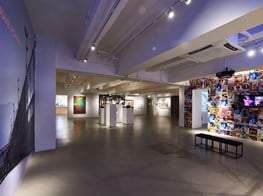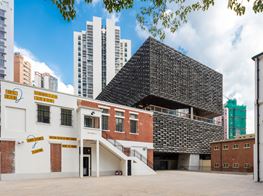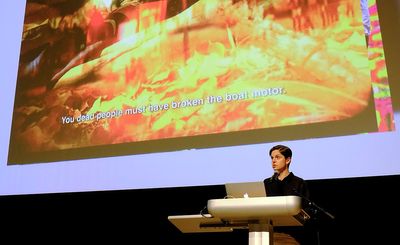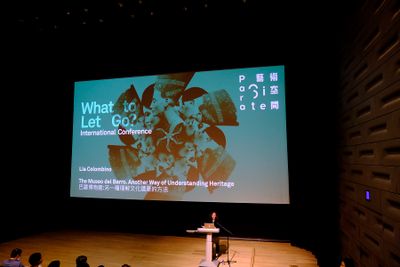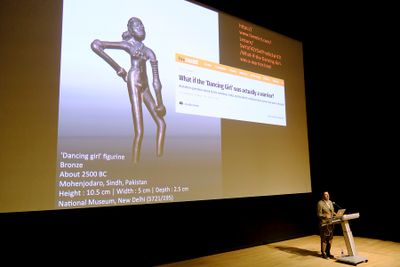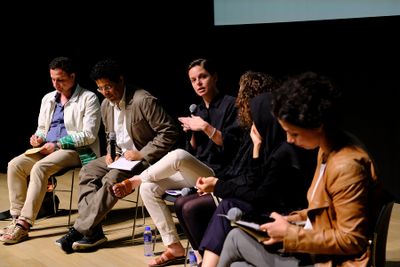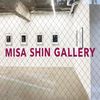Para Site International Conference Diary: Day 1
In collaboration with Para Site
What to Let Go?, the sixth annual Para Site International Conference (22–24 November 2018) organised by Hong Kong non-profit art organisation Para Site, took as its theme the tangled issue of heritage. Fittingly, the conference was held in the JC Cube Auditorium in the recently opened Tai Kwun – Centre for Heritage and Arts, Hong Kong's new public art complex located in a former colonial-era police and prison complex. Conceived by Cosmin Costinas and Inti Guerrero, the conference serendipitously coincided with the publishing of a 108-page report commissioned by French President Emmanuel Macron that recommends the return of France's looted heritage to its former African colonies—a declaration that will have major impact on and consequences for France's cultural institutions. The conference also coincided with Para Site's fourth annual Workshop for Emerging Art Professionals (17–25 November 2018), which acts as an intensive laboratory of experimentation for young art professionals from around the world.
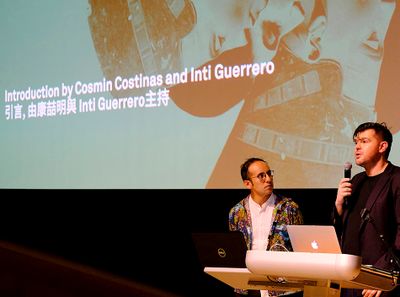
Introduction by Cosmin Costinas and Inti Guerrero at What to Let Go?, Para Site International Conference, Tai Kwun – Centre for Heritage and Arts, Hong Kong (22–24 November 2018). Courtesy Para Site. Photo: Eddie Lam, Image Art Studio.
Over three days, conference speakers considered the various motivations behind heritage conservation and renewed conversations about the repatriation of looted objects, including who decides what remains and what is let go. Pressingly, the conference aimed to address the art world's complicity in problematic heritage practices.
Vivian Ziherl—the artistic director of art and research foundation Frontier Imaginaries in Amsterdam—opened the conference on the Thursday afternoon with a discussion of the suspect relationship between mercantile networks, art institutions and the use of 'natural law' to justify Dutch colonialism. Framing her talk with detailed astrological discussions, the form of Ziherl's presentation seemed to mimic a constellation network, drawing connections between varied but related topics such as the erosion of indigenous funding in Australia and the significance of falcons, cigars and computer chips as icons of Dutch commerce.
Ziherl was followed by Lebanese artist, filmmaker and writer Jalal Toufic, who—in a circuitous manner of storytelling—oscillated between Islamic lore, the New Testament and the writings of Friedrich Nietzsche to suggest that if one considers an 'imaginal' or alternative account of a community's key writings and events, one can argue that it was not Jesus who died in Palestine circa the year 30, but rather Nietzsche (who famously signed some letters off as 'The Crucified'). This was all to suggest that art and thought has the capacity to reconsider a community's foundational texts and events.
Next, Indonesian curator Riksa Afiaty discussed the exhibition Power and Other Things: Indonesia & Art (1835–now) (18 October 2017– 21 January 2018) at the BOZAR Centre for Fine Arts in Brussels, which she co-curated on the occasion of the 2017 Europalia Art Festival, a three-month event that showcased Indonesian art in seven European countries. Asking how the complexities of Indonesia can be represented in a European context, Afiaty showed the audience several works from the exhibition—by artists including Emiria Sunassa, Ana Torfs and Antariksa—that highlight issues such as colonial violence and the changing landscape of the archipelago. As Afiaty pointed out with a smile, art addressing these issues proved to be off-putting for some officials, who would have preferred to see an exhibition of beautiful and exotic treasures.
Shifting the conversation across the globe, Lia Colombino presented the Museo del Barro in Asunción, Paraguay—of which she is director—as an institution that skirts the conceptual boundaries of the museum. Seeking to do away with distinctions between popular, indigenous and contemporary art, all objects in the museum's temporary and permanent exhibitions are presented as of equal importance. In her talk, Colombino powerfully challenged Western classifications of art, pointing out that some cultures don't use the word 'art' to describe the production of material objects, nor do they consider their made objects as 'art'. Showing slides of the manifold objects in the museum, including weavings, 19th-century portraiture and contemporary ceramics, she implored the audience to shake up what are regarded as certainties in fields of knowledge in order to see what is out of sight.
Finally, professor and curator of Indian art Naman P. Ahuja asked how heritage can empower our narrative of identity—and of gender in particular. He began by admitting that 'What to let go?' is a difficult question for someone who works with art history and archaeology, though historical memory can make 'common ground'. He then described his co-curation of the exhibition India and the World: A History in Nine Stories—shown at Chhatrapati Shivaji Maharaj Vastu Sangrahalaya in Mumbai (11 November 2017–18 February 2018) and the National Museum, New Delhi (5 May–30 June 2018)—which saw the inclusion of around 200 objects from the British Museum and various Indian collections. He noted that Indian institutions are also often guilty of applying an ethnological lens to Indian objects. Ahuja pinpointed one object in the exhibition—an iconic archaeological artefact from Mohenjo-daro in Pakistan—and suggested that while previous interpretations have classified the figure as a 'dancing girl', a renewed perspective can see the girl as an empowered female soldier.
The day concluded with a panel discussion between the speakers, moderated by Özge Ersoy, who leads public programmes at Asia Art Archive in Hong Kong. Allowing for a diverse breadth of perspectives over the course of the afternoon, the first day of the conference affirmed that the writing and re-writing of narratives requires caution, as it is possible that new injustices might be caused to the histories that are being presented.—[O]

